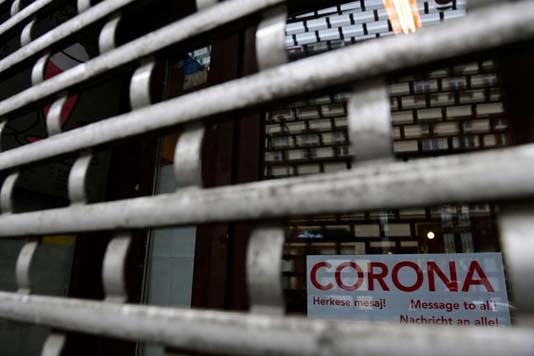PARIS, March 28, 2021 (BSS/AFP) – An upsurge in new coronavirus cases is
forcing governments across Europe into new, damaging lockdowns that threaten
to delay a much hoped-for return to growth, economists say.
The plan was that mass vaccination programmes would turn the tide on the
pandemic, allowing locked-down consumers free rein after months penned up at
home.
Instead the virus has embarked on a third wave which is proving more
difficult to bring under control.
French President Emmanuel Macron warned Thursday that the European Union
would have to do more and beef up its already massive 750 billion euro ($885
billion) virus recovery fund as a result.
The EU had made a major effort after the first wave last year, Macron
said, but “following the second and third waves… we will no doubt have to
add to our response”.
In September, as the economy picked up sharply after a rapid reverse in
the first wave, expectations were high that by the middle of this year it
would be solidly back on track, thanks especially to the vaccine rollout.
– 123 billion euro delay –
Just a couple of weeks ago, European Central Bank head Christine Lagarde
was even talking about a “firm rebound in activity in the second half of the
year”.
Now the EU’s strongest economies — Germany, France and Italy — have
reimposed restrictions and the vaccine programme in Europe is mired in a
blame game over supplies.
Credit insurer Euler Hermes estimates that the EU is now seven weeks
adrift of its target to have 70 percent of the population vaccinated by the
end of the summer, compared with five weeks in February.
It estimates the delay will cost the bloc’s 27 member states some 123
billion euros this year.
“If you compare us with the US, where the outlook is so much more
positive, we are falling further behind on the recovery because of this third
wave,” said Charlotte de Montpellier, economist with Dutch bank ING.
– ‘Two speed’ Europe –
ING now expects eurozone growth of 3.0 percent this year, down more than
half a percentage point from its previous estimate.
Most of the growth will also come from the third quarter, slightly later
too, ING added.
Andrew Kenningham, chief Europe economist at Capital Economics, said he
does not expect the bloc to return to pre-pandemic activity levels before the
second half of 2022, a year behind the US.
“We are revising down our forecast for eurozone GDP growth due to the
resurgence of virus cases, slow pace of vaccination and extension of
lockdowns,” Kenningham said.
“The outlook has deteriorated,” said Chris Williamson, chief economist at
IHS Markit.
The key Purchasing Managers Index (PMI) compiled by IHS Markit for March
showed Germany, Europe’s strongest economy, doing better than France and the
northern countries generally doing better than their southern partners —
Spain, Italy, Greece, Portugal — which risk seeing their key tourist
industries shackled for yet another year.
Standard and Poor’s however has decided to keep its eurozone growth
forecast unchanged at 4.2 percent for 2021, citing the positive factor of
cheap credit.
At the same time, the economy and Europe’s people have adapted to the
restrictions, lessening the impact, said Sylvain Broyer, chief S&P economist
for Europe.



